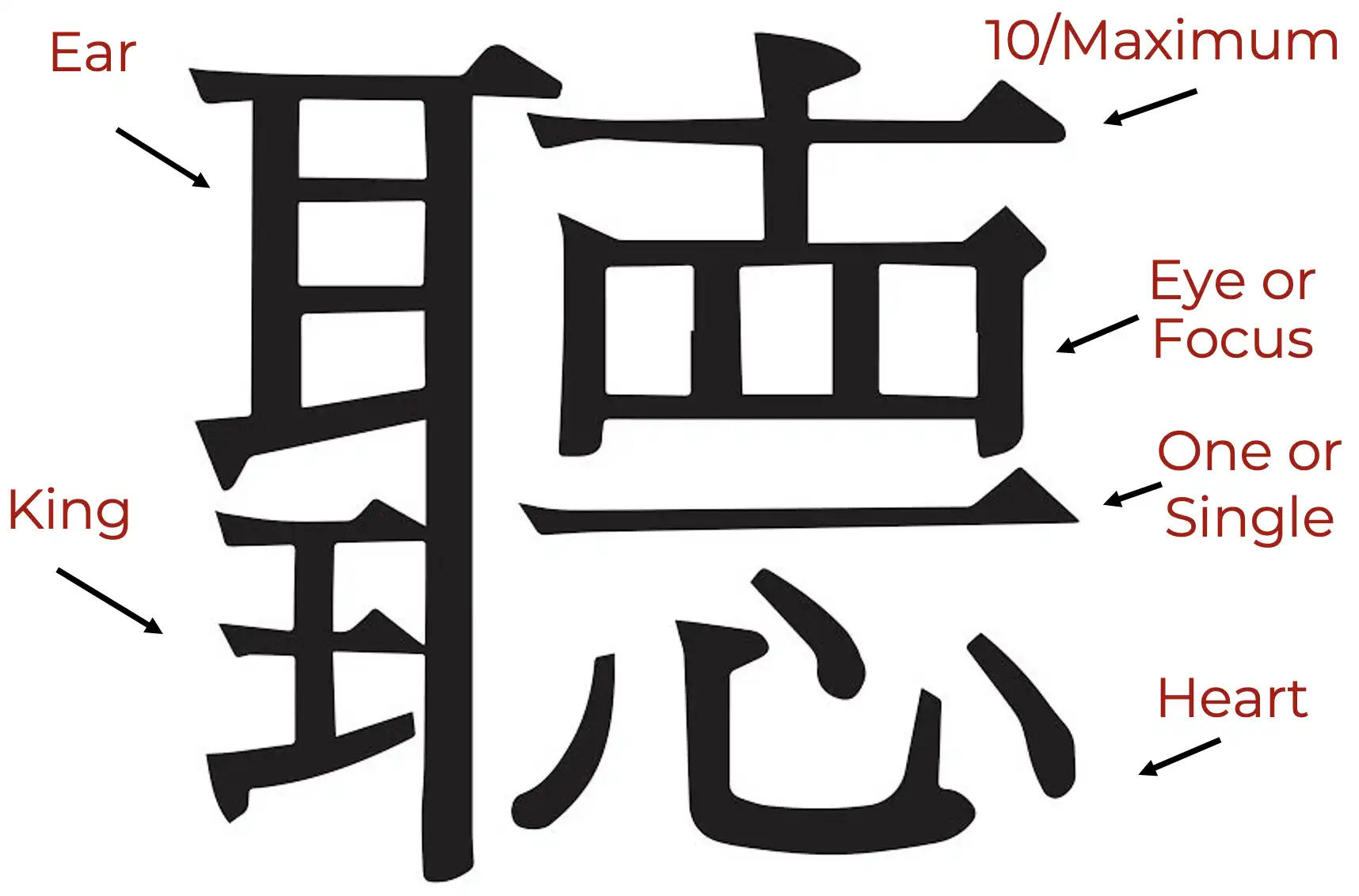
Listening the Chinese Way
What does it actually mean to listen?
Solid listening skills are an essential part of the toolkit of an effective coach. Listening to another person for the purpose of supporting his or her growth and development involves knowing how and when to listen and respond, what to listen to and for, what the clients’ words actually mean and when it is appropriate to move the conversation in another direction.
How well you pay attention to what people tell you will determine to a great extent the quality of the information that you can learn from them. As you listen, you will also realise that there are not only the words being said but also things such as intonation, body language, vocabulary etc. to consider. You can also hear what’s not being said as well as a person’s beliefs, values, emotions, states, strengths, perceived liabilities, needs, wants etc.
Listening, as a result, is more of an art than a science and something that requires consolidation. A helpful tool to consider in this process is the older style Chinese Character for the word Listening. (Today, it seems they use a less complex representation in their writing.)
Each section or portion of the character draws its meaning from other aspects and collectively tell the story of what they believed it meant to really ‘listen’ to someone. From the bottom left:
- King = Show respect for the speaker
- Ear = This is what you use to listen and gather info
- 10 or maximum = Give 100% or all of your attention
- Eye = See all there is to see
- One or single = Give all your attention to the speaker
- Heart = Get a sense all that is being said
Bringing all of these elements together as you listen will allow you to communicate more effectively with all of those around you and help ensure you get better results with the coachees, learners, clients, team members, course participants, etc. you work with.
Séamus
